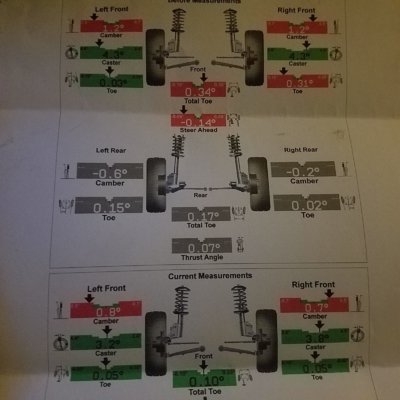iamdub
Full Access Member
Could be toe in too.
Unless there's some serious caster issues, toe OUT would be the more likely culprit for inner shoulder wear.
G-d I'm trying to remember what the heck I did.
I know when I installed my suspension, I did not have any camber kits installed. That was roughly 4/6
Then I adjusted my suspension (to lower it) and installed the adjustable cam bushing. That was closer to 5 or 5.5 up front.
Finally adjusted again (to lift it back up) and removed the arms w/the alignment bushings and put new arms back in. That time the alignment was in spec or very close to it. Ending back at roughly 4".
Looking at the way it sits right now. I need to bring the front up another inch for it to sit fairly level. Or, remove the rear set up and install coil overs to lower it down to level it out that way. But, this is not really a priority right now so once I get the front situated, I'm hoping I will be able to set it and forget it for a while. I'd like to focus on the body this spring/summer and fix the damage from the jackleg who hit a few weeks ago.
Do you recall how the steering felt right after you lowered it and had it aligned compared to how it felt at stock height? There's a chance your alignment may be within spec when it's sitting on the rack, but when the suspension is cycling, the caster, camber and toe may be swinging much more than with the stock suspension. Have you used the same alignment shop and/or tech every time? They may be setting the camber and toe and calling it good. Get before and after printouts?

